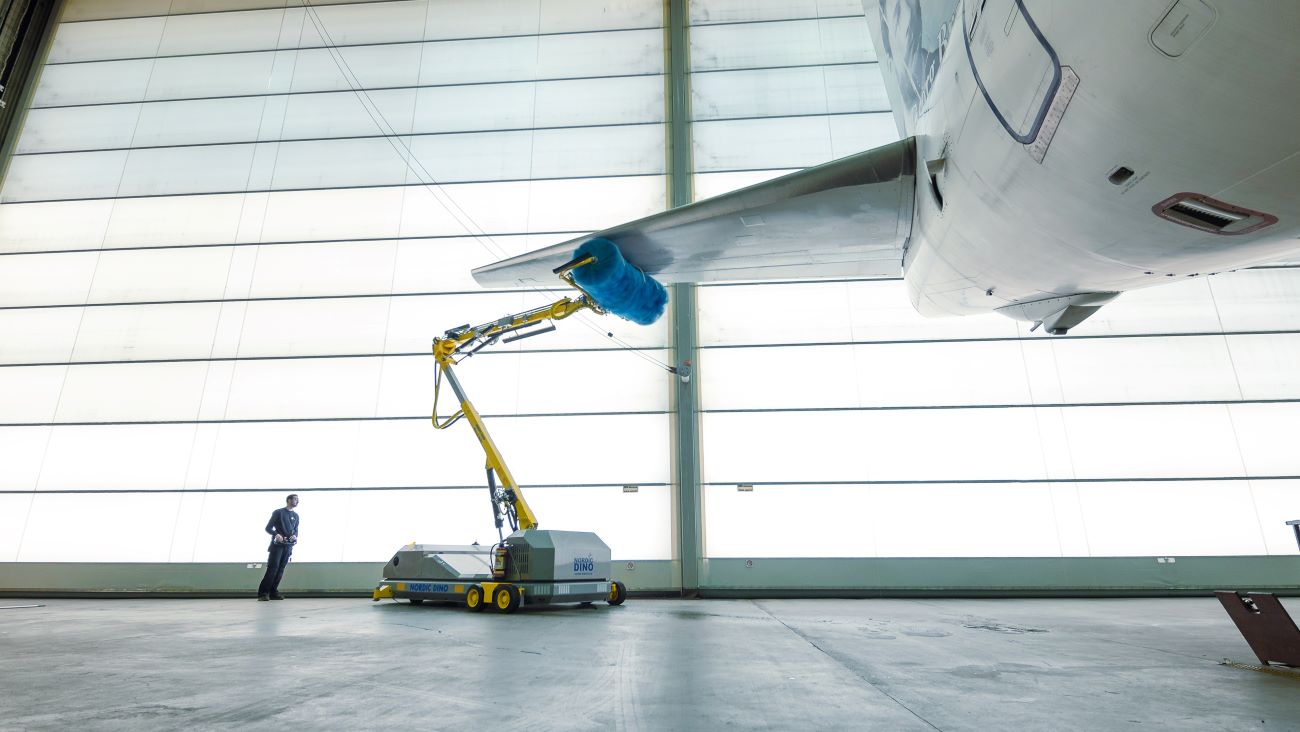Evolving Efficiency: The Next Generation of Aircraft Cleaning Technology
 In the aviation industry, where margins are tight and volumes high, even minor improvements can yield substantial financial returns. For instance, aircraft downtime, referred to as 'aircraft on ground' (AOG), poses a significant cost burden—ranging from US$10,000 to US$150,000 per hour. This accumulates to as much as US$1.2 million per day, costing the global airline industry an estimated US$62 billion annually. Reducing downtime by just 1% can therefore translate into millions of dollars in savings each year.
In the aviation industry, where margins are tight and volumes high, even minor improvements can yield substantial financial returns. For instance, aircraft downtime, referred to as 'aircraft on ground' (AOG), poses a significant cost burden—ranging from US$10,000 to US$150,000 per hour. This accumulates to as much as US$1.2 million per day, costing the global airline industry an estimated US$62 billion annually. Reducing downtime by just 1% can therefore translate into millions of dollars in savings each year.
The desire for efficiency has spurred a continuous search for innovative solutions across airlines and airports, aimed at minimizing downtime and streamlining maintenance workflows. The evolution of aircraft cleaning technology, especially through automation, represents a significant step in this journey. Historical advancements set the stage for the latest innovations, reflecting a broader trend toward integrating digitalization and sustainability into aircraft maintenance. This introduction of advanced cleaning technologies not only boosts operational efficiency but also aligns with the interests of maintenance crews, airport operators, and airline executives.
The Role of Automation in Aircraft Maintenance
Automation has revolutionized aircraft maintenance by significantly enhancing the efficiency and precision required in the aviation industry. Today's aircraft washing systems, notably robots like the Nordic Dino introduced in 1981, have been at the forefront of this transformation. Over the last four decades, these systems have evolved with major technological upgrades in sensors, control systems, and brush technology, which have been instrumental in reducing ground time for aircraft.
Veronika Andrianovaite, CCO of Nordic Dino Robotics AB, unpacks this ongoing evolution: "With our latest advancements in automated washing systems, we've turned what was once a time-intensive task into a streamlined, high-performance operation. This transition underscores a shift towards automation that maximizes efficiency while ensuring thorough maintenance standards are met.”
Advancements in Automated Systems
Across the aviation industry, automated systems are revolutionizing maintenance by boosting efficiency, reducing costs, and enhancing environmental sustainability. The latest models from Nordic Dino exemplify this trend with sophisticated automation, incorporating advanced programming and control systems that minimize human intervention. These robots adjust the cleaning process dynamically to each aircraft's needs, optimizing the cycle and maintaining high quality. This technology not only curtails downtime but also improves safety by reducing manual labor in hazardous conditions. Veronika Andrianovaite highlights the impact, "The integration of advanced sensors has significantly boosted the efficiency of our systems, leading to quicker, more precise operations and markedly shorter turnaround times."
Operational Benefits of Modern Aircraft Washing Systems
Modern automated washing systems expedite cleaning processes, allowing aircraft to spend less time on the ground, leading to substantial cost savings and better resource utilization. Furthermore, regular and thorough cleaning preserves the aircraft's exterior, reducing wear and tear and improving aerodynamics. This not only enhances fuel efficiency but also extends the operational life and boosts overall aircraft performance. Veronika Andrianovaite points out, "Our latest systems not only decrease ground time but also enhance the operational longevity and performance of the aircraft."
Environmental Impact and Sustainability
Modern aircraft washing systems significantly contribute to the aviation industry’s sustainability objectives. These systems are designed to minimize environmental impact by drastically reducing water and cleaning agent usage—some advanced robots reduce water consumption by up to 75%, thereby decreasing the ecological footprint of maintenance operations. Veronika Andrianovaite highlights these sustainable advancements, noting, "By optimizing resource use, our systems not only fulfill operational goals but also greatly advance our clients’ environmental objectives."
Conclusion
The ongoing evolution of aircraft cleaning technology, highlighted by the advancements from Nordic Dino, underscores the aviation industry's commitment to efficiency, safety, and sustainability. These innovations are crucial as airlines strive to uphold high standards while cutting costs and minimizing environmental impacts. Looking forward, Nordic Dino's continuous innovations promise to deliver even better, faster, and greener maintenance solutions, tackling future challenges head-on. To further lessen environmental impacts, the next step involves developing systems that utilize renewable energy sources and biodegradable cleaning agents, paving the way for a sustainable future in aviation maintenance.
